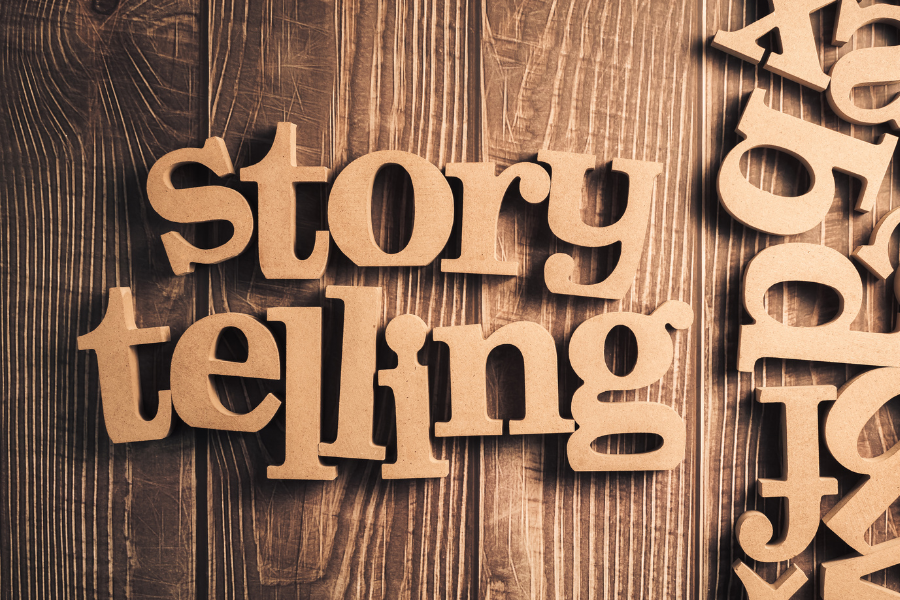Storytelling is an ancient art form that has transcended cultures and generations. In today’s digital landscape, where attention spans are short and competition is fierce, leveraging storytelling can be a powerful way to connect with your audience on a deeper level. Whether you’re a brand looking to engage customers or an individual aiming to inspire, storytelling can help you convey your message effectively. Here’s how to harness the power of storytelling to forge meaningful connections with your audience.

Table of Contents
Toggle1. Know Your Audience
Before crafting your story, it’s essential to understand who your audience is. Consider their demographics, interests, and pain points. What motivates them? What challenges do they face? By knowing your audience, you can tailor your story to resonate with their experiences and emotions. Research your target audience through surveys, social media insights, and analytics to gather valuable data that can guide your storytelling approach.
2. Define Your Core Message
Every great story has a central message or theme. Determine what key takeaway you want your audience to gain from your story. Whether it’s a lesson learned, an emotional connection, or a call to action, having a clear core message will help you stay focused and ensure that your story aligns with your objectives. This message will act as the backbone of your narrative, guiding the content you create.
3. Create Relatable Characters
Characters are the heart of any story. They allow your audience to see themselves in the narrative and evoke empathy. Whether it’s a hero, a mentor, or even an everyday person facing challenges, relatable characters draw your audience in. Share their struggles, aspirations, and transformations, and make them authentic and multidimensional. If you’re telling a brand story, consider featuring real customers or employees to humanize your brand and foster a stronger connection.
4. Use Emotion to Engage
Emotional storytelling can be incredibly powerful. People remember how a story made them feel long after they forget the details. Incorporate elements of joy, sadness, triumph, and struggle to elicit emotional responses from your audience. Use descriptive language, vivid imagery, and relatable scenarios to evoke feelings that resonate with your audience. The more emotionally connected they feel, the more likely they are to engage with your message.
5. Structure Your Story
A well-structured story typically follows a classic narrative arc: Beginning, Middle, and End.
- Beginning: Introduce the setting, characters, and the initial situation. Capture the audience’s attention with a hook or intriguing premise.
- Middle: Present a conflict or challenge that the characters must overcome. This is where the tension builds, and your audience becomes invested in the outcome.
- End: Conclude the story with a resolution that reinforces your core message. Share the lessons learned or the transformation experienced by the characters.
A clear structure helps your audience follow the narrative easily and makes the story more impactful.
6. Incorporate Conflict and Resolution
Conflict is essential to storytelling as it creates tension and keeps the audience engaged. Present a challenge or obstacle that your characters face, and showcase their journey toward overcoming it. This struggle not only makes the story relatable but also allows you to highlight the resolution, emphasizing the lessons learned or the positive outcomes that emerged from the experience.
7. Utilize Different Formats
Storytelling can take many forms, from written articles and blog posts to videos, podcasts, and social media posts. Consider the best format for your audience and message. For instance, visual storytelling through videos or infographics can be highly engaging, while written narratives allow for deeper exploration of themes and characters. Experiment with various formats to find what resonates best with your audience.
8. Invite Participation
Engaging your audience in your storytelling can deepen their connection. Encourage them to share their stories, experiences, or opinions related to your narrative. This not only fosters community but also creates a sense of belonging. User-generated content, such as testimonials or social media posts, can further enhance your storytelling efforts and make your audience feel valued and involved.
9. Be Authentic
Authenticity is crucial in storytelling. Share genuine experiences, insights, and lessons learned, whether they are from personal experiences or your brand’s journey. Audiences appreciate honesty and vulnerability, which can foster trust and credibility. Avoid overly polished narratives that feel insincere; instead, embrace the imperfections that make your story relatable.
10. Measure and Adapt
Finally, assess the impact of your storytelling efforts. Analyze audience engagement metrics, such as likes, shares, comments, and feedback, to determine what resonates with your audience. Use this data to refine your storytelling approach, focusing on the themes and formats that drive the most engagement. Continuous adaptation will help you stay relevant and connect with your audience more effectively.
Conclusion
Storytelling is a powerful tool that can help you connect with your audience on a deeper emotional level. By understanding your audience, crafting relatable characters, and structuring your narrative effectively, you can create impactful stories that resonate and inspire. Remember to be authentic, invite participation, and continuously refine your approach based on feedback. In a world saturated with content, compelling storytelling can set you apart, fostering lasting connections and loyalty among your audience. So, embrace the art of storytelling and watch as it transforms the way you engage with your community.


No responses yet